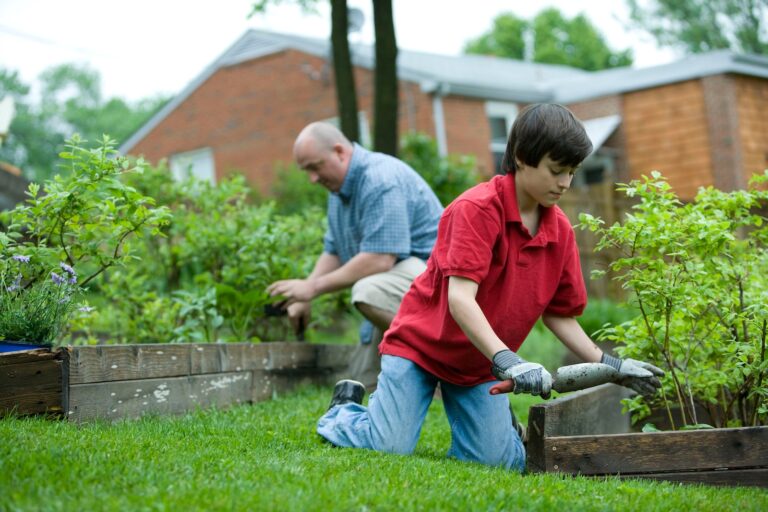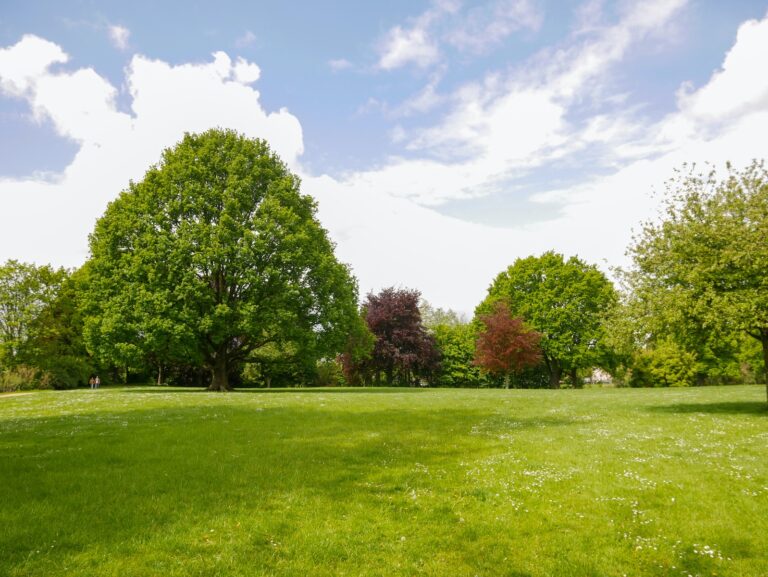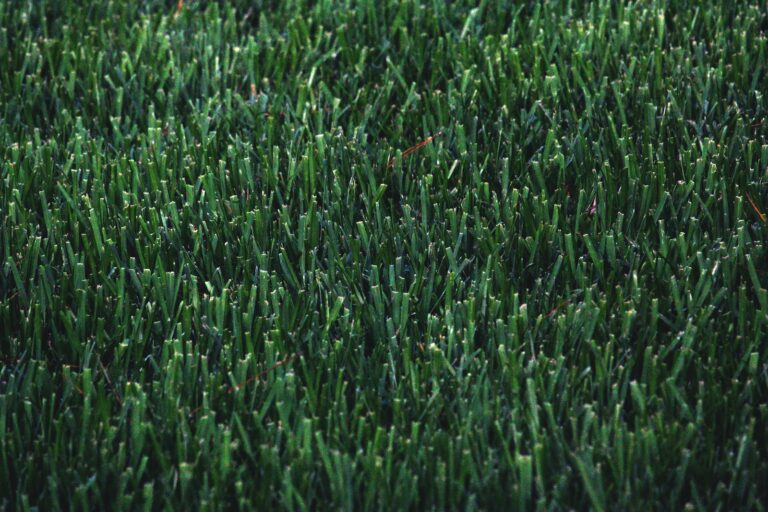How to Prevent and Treat Common Lawn Problems and Diseases

Picture yourself enjoying a warm summer evening on your picture-perfect lawn, only to notice brown patches, wilting grass, or strange growths popping up. Seeing our once-beautiful lawns fall prey to diseases and problems can be frustrating – but fear not! With the right knowledge and care, you can keep your green landscape thriving all season long.
In this blog post, we’ll explore some of the most common lawn problems and how to prevent and treat them with ease. So sit back (on the healthy spots), grab a cold drink (in between treatments), and get ready to become an expert at maintaining your lush oasis.
Introduction to Lawn Problems and Diseases
Lawn problems and diseases can be caused by a variety of factors, including insects, fungi, bacteria, and environmental stressors. Some common lawn problems and diseases include brown patches, chinch bugs, dollar spot, powdery mildew, and red thread.
While some lawn problems and diseases are caused by factors that are out of your control, there are several things you can do to help prevent and treat common lawn problems and diseases. Below is a list of tips for preventing and treating common lawn problems and diseases:
-Mow at the proper height. Depending on the type of grass you have, you should mow at a height of 2 to 3 inches.
-Remove debris from your lawn. Debris such as dead leaves and twigs can provide a place for insects and fungi to live and cause damage to your lawn.
-Aerate your lawn. Aeration helps improve drainage and allows air, water, and nutrients to reach the roots of your grass.
-Fertilize regularly. Fertilizing helps promote growth and gives your grass the nutrients it needs to withstand stressors such as heat and drought.
Common Causes of Lawn Problems and Diseases
If you’re a homeowner, chances are you take pride in your lawn. A lush, green lawn is the perfect backdrop for all your outdoor activities and can increase your home’s curb appeal. But sometimes, despite your best efforts, your lawn can develop problems. Diseases and pests can wreak havoc on your lawn, leaving it patchy, brown, and full of weeds.
Common causes of lawn problems and diseases include inadequate watering, poor drainage, excessive thatch, compacted soil, nutrient deficiencies, and pest infestations. Many of these problems can be prevented with proper lawn care practices. For example, mowing at the correct height for your grass type, watering deeply but less frequently, and aerating compacted soil can help prevent many common problems.
If you do have a problem with your lawn, don’t despair. There are many effective treatments available to get your grass looking green and healthy again. With a little effort and patience, you can have a beautiful lawn that you can enjoy for years to come.
Identifying Different Types of Lawn Diseases
Different lawn diseases can be difficult to identify because they often present similarly at first glance. However, there are some key indicators that can help you determine which type of disease your lawn has contracted.
If your lawn is yellowing or browning in patches, it is likely suffering from a fungal disease. If the affected areas are sunken and/or have dark margins, it is most likely a bacterial disease. If the grass blades are discolored or mottled, or if there are lesions on the leaves, your lawn could have a viral disease.
To get a better idea of what kind of disease your lawn has, it is best to consult with a professional. They will be able to take samples of the affected grass and properly diagnose the issue. Once you know what kind of disease you are dealing with, you can take the appropriate steps to treat it and prevent it from spreading further.
Prevention Strategies for Lawn Problems and Diseases
There are a number of prevention strategies that you can use to help keep your lawn free from problems and diseases. First, it is important to choose the right grass for your climate and soil type. Ask your local nursery or county extension office for recommendations. Once you have selected the right grass, be sure to follow the recommended seeding rates and fertilization schedules.
Another important prevention strategy is to maintain a healthy lawn by mowing at the proper height and frequency, watering deeply but infrequently, and aerating regularly. A healthy lawn is better able to resist disease and recover from damage.
If you do have problems with lawn diseases, be sure to treat them early with a fungicide specifically labeled for that disease. Never apply a broad-spectrum pesticide to your lawn unless absolutely necessary, as this can do more harm than good.
Treatment Options for Lawn Diseases
Preventing and treating common lawn diseases can seem like a daunting task, but with a little knowledge and the right products, it can be easy to keep your lawn looking healthy and green. Here are some of the most common lawn diseases and their treatments:
Brown Patch: Brown patch is a fungal disease that affects both warm- and cool-season grasses. It appears as large, brown patches in your lawn and is most active in humid conditions. Treatment options include fungicides, aeration, and dethatching.
Dollar Spot: Dollar spot is another fungal disease that appears as small, circular brown spots on your lawn. It is most active in cooler temperatures and humid conditions. Treatment involves using a fungicide according to label directions.
Pythium Blight: Pythium blight is a type of fungal disease that affects both warm- and cool-season grasses. It appears as large, water-soaked patches of turf that turn brown or black. Pythium blight is most active in warm, wet conditions. Treatment includes using a fungicide according to label directions.
Diagnosing Plant Nutrient Deficiencies

The first step in diagnosing plant nutrient deficiencies is to take a soil test. This will provide you with information on the pH level and nutrient content of your soil. You can then use this information to determine which nutrients your plants are lacking.
Common signs of nutrient deficiencies include yellow or pale leaves, stunted growth, and poor plant health. If you suspect that your plants are deficient in a certain nutrient, you can try applying a fertilizer that contains that nutrient. You can also amend your soil with compost or mulch to improve its nutrient content.
Natural Solutions for Managing Pest Issues

As much as we love spending time outdoors, nobody wants to share their lawn with pests. Unfortunately, pests are a common problem for many homeowners. The good news is that there are natural solutions that can help you manage your pest issues.
One of the best ways to prevent pests is to keep your lawn healthy. Pests are attracted to weak and unhealthy grass, so by maintaining a strong lawn, you can deter them from setting up shop in your yard. Be sure to mow regularly, water deeply and evenly, and fertilize according to the needs of your grass type.
If you already have a pest problem, there are several natural solutions that can help. For example, nematodes are tiny parasitic worms that prey on common lawn pests like grubs and Japanese beetles. You can purchase nematodes at your local garden center and apply them to your lawn according to the package directions.
Another option is to use beneficial insects like ladybugs and Lacewings, which eat common pests like aphids and scale insects. You can purchase these insects online or at your local garden center. Release them into your garden according to the package directions.
There are also several homemade remedies that can be effective in managing pests. One option is to mix together equal parts water and dish soap and use it to treat areas of your lawn that are infested with aphids or other soft-bodied insects. Another option is to mix 1 part water with 3 parts rubbing alcohol and use it to treat areas infested with scale insects.
Finally, you can use natural repellent plants like mint, lavender, and citronella to keep pests away. Plant these around the perimeter of your yard or in planters or window boxes to deter any unwanted visitors.
Using natural solutions is an effective and safe way to manage pest issues on your lawn. By following the tips above, you can help create a healthy and pest-free outdoor environment for you and your family to enjoy.
How to Revive a Damaged or Dead Lawn
It’s pretty heartbreaking when you go out to your lawn and it’s brown and dead. But don’t give up hope just yet! In many cases, a dead or damaged lawn can be revived with some tender loving care.
Here are some tips on how to revive a damaged or dead lawn:
- Aerate the soil to allow water, air and nutrients to reach the roots.
- overseed the area with fresh grass seed.
- Top dress the lawn with compost or other organic matter.
- Water deeply and regularly, keeping the soil moist but not soggy.
With some attention and effort, you can bring your lawn back to life and have it looking healthy and green in no time!
Conclusion
Common lawn problems and diseases can be a major problem for many homeowners, yet they are avoidable with proper preventive steps and treatments. Whether you’re dealing with weeds, insect damage or fungal growth, keep an eye out for potential issues and take the necessary actions to nip them in the bud before they become more serious. With careful maintenance and early detection, maintaining a healthy lawn is within reach!

James is a passionate writer and gardener with years of experience in home gardening. He is the author of several articles and blog posts on HomeGardenBlog.com, a platform where he shares his expertise and love for plants and gardening with the world.







